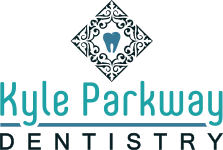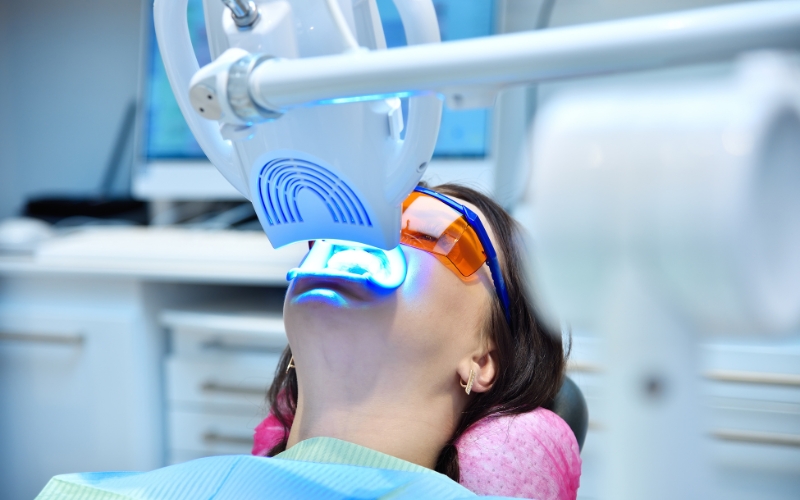The Role of Laser Dentistry in Treating Gum Disease

Gum disease, known as periodontal disease, affects millions worldwide. It starts with gum inflammation (gingivitis) and can progress to more severe forms, leading to tooth loss. The primary reasons include poor dental hygiene, smoking, and certain medical problems. Gum disease symptoms include red, swollen gums, bleeding, and foul breath. Traditional treatments, like as scaling and root planing, are effective but frequently painful. Thankfully, laser dentistry has emerged as an innovative solution.
Laser dentistry offers a less invasive, more precise way to treat gum disease. This blog will explore how laser dentistry works and why it’s becoming a preferred method for treating gum disease effectively.
What is Laser Dentistry?
Laser dentistry involves using a focused light beam to perform dental procedures with high precision. Lasers can treat a variety of dental conditions, including gum disease. Common types of lasers used in dentistry include diode lasers and CO2 lasers.
Diode lasers are commonly utilized for soft tissue procedures such as gum treatment, but CO2 lasers are suitable for both hard and soft tissue treatments. Laser dentistry differs from traditional methods, which use light energy instead of mechanical tools. This allows for a more targeted approach, which means less tissue injury and faster recovery. It’s a cutting-edge solution that makes gum disease treatment faster and more comfortable.
Understanding Gum Disease
Gum disease progresses through stages, starting with gingivitis, which causes gum inflammation and redness. If left untreated, it can progress to periodontitis, a condition in which the infection spreads deeper into the gums, potentially causing tooth loss.
Early detection is critical to avoiding serious problems. Traditional procedures including as deep cleaning, scaling, and root planing can help eradicate bacteria, but they typically cause discomfort and need longer recovery times. They can may fail to completely eliminate infection from deep pockets in the gums.
This is where laser dentistry shines, offering a more effective, less invasive solution. By using lasers to target infected tissue precisely, laser dentists can treat gum disease more efficiently and with better outcomes.
How Laser Dentistry Works for Gum Disease Treatment?
Laser dentistry offers a precise and less invasive approach to treating gum disease. A laser dentist Kyle uses a focused beam of light during the procedure to remove infected tissue, bacteria, and tartar from the gums and tooth roots.
Scaling and root planing is a popular technique for cleaning beneath the gum line to remove harmful bacteria and debris. Lasers can also reshape gum tissue, reducing pockets where bacteria can thrive. Lasers, unlike prior surgeries, do not require any cutting or stitching, making the surgery less painful for patients. The laser’s radiation also sterilizes the treatment area, reducing the risk of infection.
Another key benefit is that lasers cause minimal discomfort, so patients often require less anesthesia, resulting in a more comfortable experience overall. The laser’s precision helps to preserve healthy tissue, lowering the chance of future gum injury. The healing process is typically faster, with less bleeding and edema than traditional therapies.
Laser dentistry offers an advanced, effective, and less painful solution for patients suffering from gum disease.
Advantages of Laser Dentistry for Gum Disease
Laser dentistry has various advantages for treating gum disease. Minimally invasive techniques eliminate the need for cutting or stitching, which reduces gum stress. This makes recovery easier and faster than typical surgical therapies.
One of the primary advantages of laser treatment is speedier recovery. Lasers cause less tissue damage, thus patients have less swelling and bleeding, allowing for faster healing.
Another key advantage is enhanced precision. A laser dentist can only target the infected tissue, keeping the healthy gum areas intact. This precision ensures patients receive more effective treatment while minimizing damage to surrounding healthy tissue.
Another major benefit is the reduced discomfort during the procedure. Laser treatments are less painful than traditional methods, so many patients require little to no anesthesia.
A lower risk of infection is also an advantage. The laser’s energy sterilizes, helping to eliminate bacteria during the procedure. This results in cleaner treatment areas, reducing the likelihood of post-treatment infections.
Laser dentistry provides a safer, more comfortable, and more effective treatment for gum disease, making it an ideal choice for many patients.
What to Expect During a Laser Dentistry Procedure for Gum Disease?
If you’re considering laser dentistry for gum disease treatment, here’s what you can expect during the procedure. First, your laser dentist will evaluate your condition and may use a local anesthetic to numb the treatment area, ensuring comfort. The dentist will then use a laser to target and remove the infected tissue and bacteria from the gum pockets.
Furthermore, the laser helps reduce swelling and bleeding, promoting faster healing. The entire process is typically quicker than traditional methods, often taking only one hour or less.
Laser dentistry requires minimal downtime, meaning you can usually quickly return to normal activities. After the treatment, the dentist may provide guidelines for aftercare, including avoiding certain foods or activities for a few days to help the gums heal.
While laser operations are generally well tolerated, some soreness may occur when the anesthesia wears off, but this is usually only short. You may also be advised to follow up with the dentist to monitor your progress. Laser gum disease treatments offer a comfortable, efficient, and effective option.
Laser dentistry is changing the way gum disease is treated. Its benefits include minimally invasive procedures, quicker recovery times, and improved outcomes. Laser dentistry enables dentists to treat gum disease with more precision, less discomfort, and a reduced risk of infection.
If you’re dealing with gum disease, consider consulting our laser dentists to explore your options for treatment. Laser dentistry can provide the advanced care needed to restore oral health and maintain a beautiful smile. Talk to our dentists today to learn more about how laser treatments can help treat gum disease effectively and efficiently.





